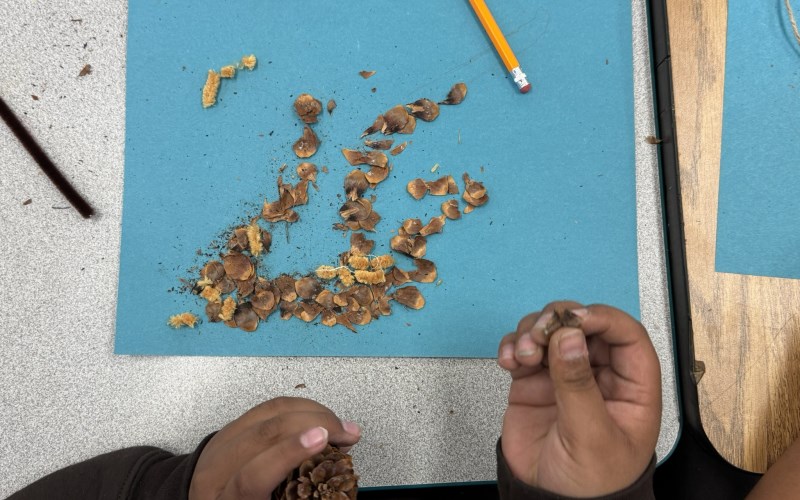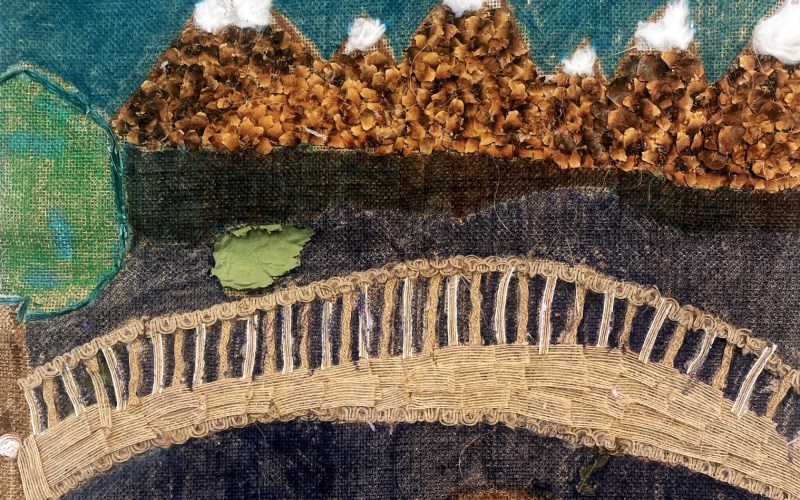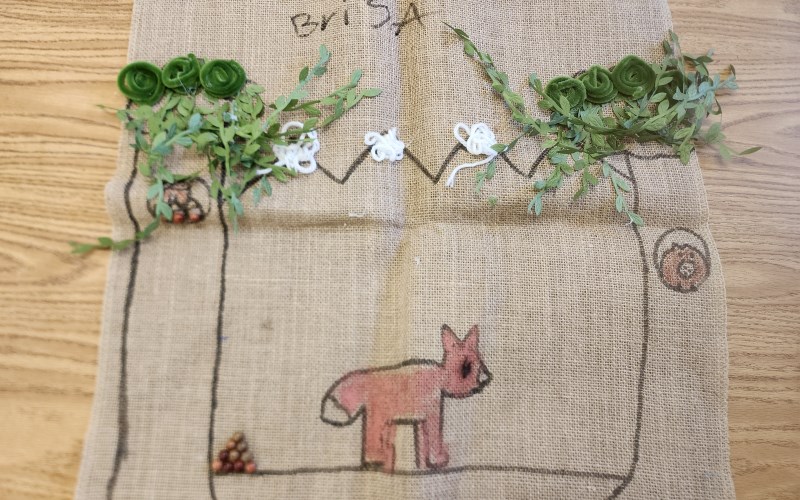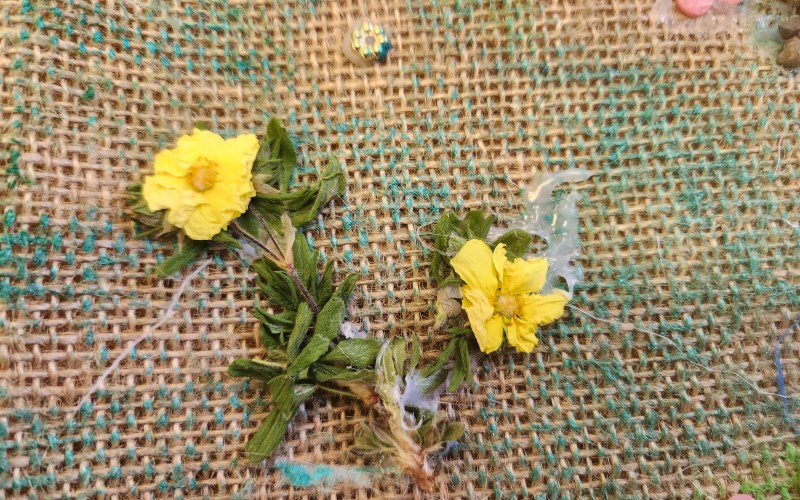|
STORY BY KAREN BOSSICK
PHOTOS BY KAREN BOSSICK AND SUSAN DESKOS
A tapestry of elementary school students’ work will dominate one end of The Argyros’ Tierney Theater tonight when Far and Wise holds its annual fundraiser.
Nearly a hundred squares will create a mosaic representing the forest that surrounds the Wood River Valley.
|
|

Susan Desko is passionate about hands-on learning: “There are so few opportunities now to actually work with your hands”
|
|
|
Students enrolled in the Far and Wise afterschool tutoring and enrichment program at Bellevue Elementary each created something speaking to the trees on a piece of burlap. They will be hung together to create the mosaic.
The idea for the project came from Ketchum architect Susan Desko, who designed the iconic Starbucks Visitor Center in Ketchum utilizing—you guessed it—reclaimed lodgepole pine and the like.
Desko was asked to join the board of Far and Wise after leading some of the youngsters through an earlier project in which she taught them about architectural design and building materials while building Hansel and Gretel houses.
When she learned about the fundraiser, she suggested that students’ work be featured since the students are at the core of Far and Wise.
|
|

This elaborate tile makes use of pinecone remnants left behind by a squirrel.
|
|
|
Gathering kindergarteners to fifth-graders around her, she told them how she received a little tree seedling wrapped in a burlap bag on the very first Earth Day in 1970 when she herself was in second grade.
“I showed them pictures of the seedling with the burlap around it. I told them how I had planted it and taken care of it. Then I showed them a picture showing how the tree had grown up to be 70 feet tall,” she said.
Desko then introduced the students to burlap, telling them how it is made out of plant fibers that have been woven together. They took pencils and poked through pieces of burlap as they examined how one can see through burlap and stick things through burlap.
Then she took them outside Bellevue Elementary where they could gather feathers, sticks, pine cones and other natural materials to use for their artwork.
|
|

Brisa has an affinity for wildlife with birds nesting in the hole in the trees, a fox below and…is that a pig?
|
|
|
“I tried to emphasize that everything we have originally came from the earth. I told them how yarn comes from sheep, and we talked about how you can give a sheep a haircut and it keeps on living while you turn its wool into yarn. Even Yellow No. 2 pencils—the wood comes from a tree and the metal lead poured in the wood casing comes from the earth.”
Desko shared books about artists who work with natural materials. Among them, Andy Goldsworthy, who is considered the founder of modern rock balancing and has been known to use icicle and snow in his work, knowing they are going to melt and that his art is going to disintegrate into the earth.
“I showed the kids how he takes different colored fall leaves—red, yellow, orange and deep purple—and created a rainbow of leaves and stuck it on a tree trunk. And the kids loved it as they could see everything we create comes from the earth,” she said”
When Desko returned to class the following week, one of the kindergarteners couldn’t wait to show her the mosaic she had created.
|
|

This tile is a shout-out to the splendor of wildflowers—with Life Saver accents.
|
|
|
“She explained that the thing that took her the most time was figuring out what colors to use on the popsicle sticks she lined on the bottom of her burlap,” Desko said. “She had been so struck by the photo of Andy Goldsworthy’s piece using different colored leaves. And that was so inspiring for me to see how she had responded.”
Another student held up his mosaic, the 18-inch piece of burlap covering his torso. A big stripe down the middle of it represented water.
“When he placed the burlap on the table, he was wearing a blue T-shirt and in the middle was a giant blue shark. Here he was wearing a blue T-shirt with a shark and it was very apparent from his mosaic that he loved water,” she recounted.
The tapestry mosaics are little masterpieces in the hands of chubby little second- and third-graders’ hands. One features mountains made of crushed leaves sporting cotton snow and a bridge below.
Another features a sun with colored leaves, a tree made of green grass and green pipe cleaners beneath a Matterhorn-like mountain made of beads. One features a polka dotted mushroom forest and another, a fisherman and deer beneath a giant ponderosa pine made of needles and twigs. Still another features a mountain path of seashells and pebbles.
Each tile is a small window into a child’s imagination—the child’s take on the trees, wildlife, and the mountain landscapes that surround our community, Desko said. Together, the pieces form a vibrant forest, reminding viewers that many hands and many visions can unite into a flourishing mosaic.
“You share these things with children and you never know what the net effect will be,” said Desko. “The beauty of mentoring is that you don’t get to know the outcome. All you can do is invest in the potential and see what happens.
|